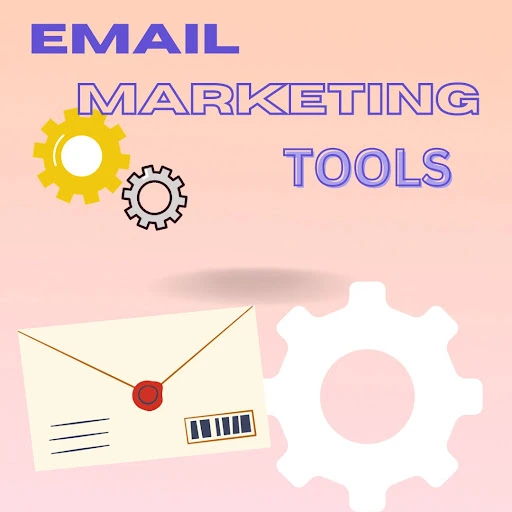Email marketing is one of the many branches of direct marketing as well as digital marketing, with the aim of connecting with customers, leading generation, and raising brand awareness.
It is one of the most dominant digital marketing strategies. The goal of it is to send emails to a targeted group of people in order to achieve the objectives that the business has. Email marketing is a profitable way of interacting with the business-targeted group. Especially now when almost every aspect of digital marketing is pricey, working up on gaining trust and receiving conversions.
Through emails businesses or organizations make their customers informed about the new items or services that they can offer.
Therefore, the main objectives of email marketing include increasing brand awareness, building trust and loyalty with their customers, and driving sales.
In this article, we will discuss more particularly what email marketing is, what the benefits and disadvantages of email marketing are, and tools and ways of getting started with it. Some tips on how to succeed in email marketing and track that success.
What is Email Marketing?

The main strategy of email marketing is sending emails to those subscribers who have shared their email with the company or business. The content of those emails is mainly informative. They can announce a change in their way of working, new products or opportunities, discounts, and so on. You name it!
There are many types of emails that you can include in email marketing strategies.
Let’s take a look at them!
Sales/Transactional Emails: Sale emails are for specific purposes such as purchase confirmation, password resets, or updates on order status.
As we can guess by its name, sales emails are for providing information related to sales.
Promotional Emails: The aims of these emails are to promote products and exclusive or special offers. We talked about discounts above, they belong to this type of email along with promotions and a good CTA to drive sales.
Email Newsletters: They give subscribers insights into updates, news, and information about the company. The goal of these kinds of emails is mainly to raise brand awareness and increase the engagement of subscribers over the course of time.
Welcome Emails: When new people subscribe, companies usually send these types of emails as a greeting text, introducing their brand, perhaps with some special offers to arouse interest in their new customers.
Feedback or Survey Emails: Through surveys and feedback businesses gain information about how they are operating by getting their customer’s opinions on them. These feedbacks as well as surveys help businesses improve the quality of their services and products.
Lead nurturing emails or re-engagement emails: Usually, those customers and subscribers who have been inactive for a long time receive re-engagement emails to arouse interest in the brand one more time. Some special and unusual offers can be the cherries on the “email” in this case. The brands may as well remind their customers about the value they provide through re-engagement emails.
Milestone emails, such as for customer birthdays or anniversaries. It is a known fact that people are affectionate by their nature and like it when they are treated and feel special. So the companies use this to their advantage sending emails on their subscribers’ birthdays. Most of the time offering discounts or special offers.
Appreciation or Thank-You Emails: Some companies send appreciation emails to their customers for receiving a purchase order. By doing so they create positive associations with their brand.
This list can go on and on.
There are abandoned cart emails, which are reminders to those customers who have added something to their cart and haven’t bought it yet to complete the purchase, announcement emails that inform the subscribers about new products and opportunities, event invitation emails, and so on.
Alongside other branches of marketing, email marketing comes with its own advantages and disadvantages as well. Being aware and well acquainted with them can help business or company owners to make better decisions for their business out there.
Now let’s talk about the advantages and disadvantages of email marketing briefly.
Advantages of Email Marketing:
The first and foremost advantage of email marketing is its cost-effectiveness as sending emails to subscribers does not require printing anything thus minimizing costs. Even if your subscribers have the potential to spend a lot of money like if they were buying a freehold.
Sending emails is mainly all about automation which is another advantage for email marketing. There are some steps of course that the users should do manually but as a rule, they are not time-consuming.
When businesses get access from their consumers to send them emails, it gives them a big opportunity as they get to know their targeted audience in an exact way. Therefore, they have targeted emails and cheering results.
Another advantage of email marketing that we would like to bring forward is wide-reach as you could guess by the above-mentioned ones. Emails are super popular now and almost every person has an email address. This gives email marketing broad access to a global audience, bringing a business a large number of customers.
Disadvantages of Email Marketing:
Overflowing Inboxes are a big problem for email marketing as it makes it very hard for emails sent by businesses to stand out and get noticed.
Submission challenges may occur in the process of email marketing too as the deliverability depends on different factors such as content quality and customer engagement.
Email marketers can come across such problems as spam which can happen as a result of breaking rules, which can damage their brand’s reputation, by the way.
It is a highly competitive field so being able to survive in such conditions can be really challenging.
Email Marketing tools

There are many email marketing tools and platforms for improving email marketer’s team efficiency out there. These tools are great helpers in putting into action marketing strategies with advanced features and personalized emails.
Here is a list of email marketing platforms that help manage contact lists, send automated emails, and monitor the results.
- Mailchimp
- Omnisend
- Sendinblue
- Get Response
- Active Campaign
These are great platforms for carrying out an email marketing strategy no matter what the goals of the strategy are.
Tracking email marketing success in 2023
Tracking email marketing success in 2023 demands the combination of both traditional and new email metrics. It is an important step to care for at the very beginning of the campaign. And it is desirable for marketers to do so at every stage of the campaign.
In order to track email marketing success, the first step to make is to define goals. The goals can be different, from increasing click-through rates to increasing email campaign revenue.
Email Marketing can be improved through email verification tools as well. Here’s how to do it.
Year by year, technologies become more advanced and so do email marketing platforms and tools.
The tools mentioned in this article are great for implementing your email marketing strategy and tracking.
Thanks to Key performance indicators (KPI) you understand the way campaigns work out.
Being familiar with KPIs and how they work is vital for tracking email marketing success.
Here is a breakdown of what each KPI means.
Open Rates
Open Rates show the number of recipients who have opened your emails. If open rates are not high then a good way out of that problem is choosing the right segmentation and personalization.
Click-Through Rate(CTR)
Click-Through Rate(CTR) indicates the percentage of people(recipients)who have clicked on the link or links attached to your email. Naturally, if people click on the link then it means that such content interests them. Taking this information into account you can use this KPI for tracking the engagement of your email. You can play with A/B tests to see which content goes well for improving CTR. Quizzes, videos, or different polls are beneficial for high engagement, especially in 2023.
Conversion Rate
Conversion Rate is for gaining conversions. Analyzing the conversion rates is important in order to track the effectiveness of your emails that are for driving sales. For example making a purchase, signing up for an account or webinar.
The metrics of unsubscribers show how much your content is useful for your audience. Naturally, there are always going to be people who will unsubscribe but if you track it and notice a high percentage of unsubscribed. Then you will try to find the reasons for the issue and a way of solving it.
For tracking deliverability, bounces(occur when an email server rejects an email) provide valuable data. A low bounce rate is good as it maintains a good reputation for the sender.
Respectively, when the bounce rate is high it indicates that the emails are going undelivered.
Email bounces have 2 types: soft bounces and hard bounces. Soft bounces mean that an email was not delivered for a temporary reason, while hard bounces indicate that emails cannot be delivered due to a permanent issue.
By getting to know the email marketing world, following the steps mentioned in our article, and adjusting to this rapidly growing and developing field(for example, learning about AI writing tools). You will be ready to launch a campaign and make it successful.
Remember that email marketing is a fast-changing sphere and staying informed about it and utilizing the necessary tools is the key to success.
Conclusion
In the ever-evolving landscape of digital marketing, keeping a close eye on your email marketing efforts is paramount. As we step into 2023, understanding how to track email marketing success is not just a skill but a strategic necessity for businesses of all sizes. In this article, we’ve explored a range of tools and techniques that empower you to measure the impact of your email campaigns with precision.



